Abstract
We have developed an automated, modular utility assessment software package called U-titer. The package implements the rating scale, category scaling, standard gamble, chronic and temporary time trade-off methods of assessing patient's preferences, and allows extensive tailoring of each method. In addition to calculating utilities, U-titer records information on the process experienced by the user. It can use information gathered in one module to coordinate another module. Our early experience suggests U-titer assessments are similar to traditional assessments. This software should facilitate both the study of patient's utilities and the study of the assessment methods and their implementation.
Full text
PDF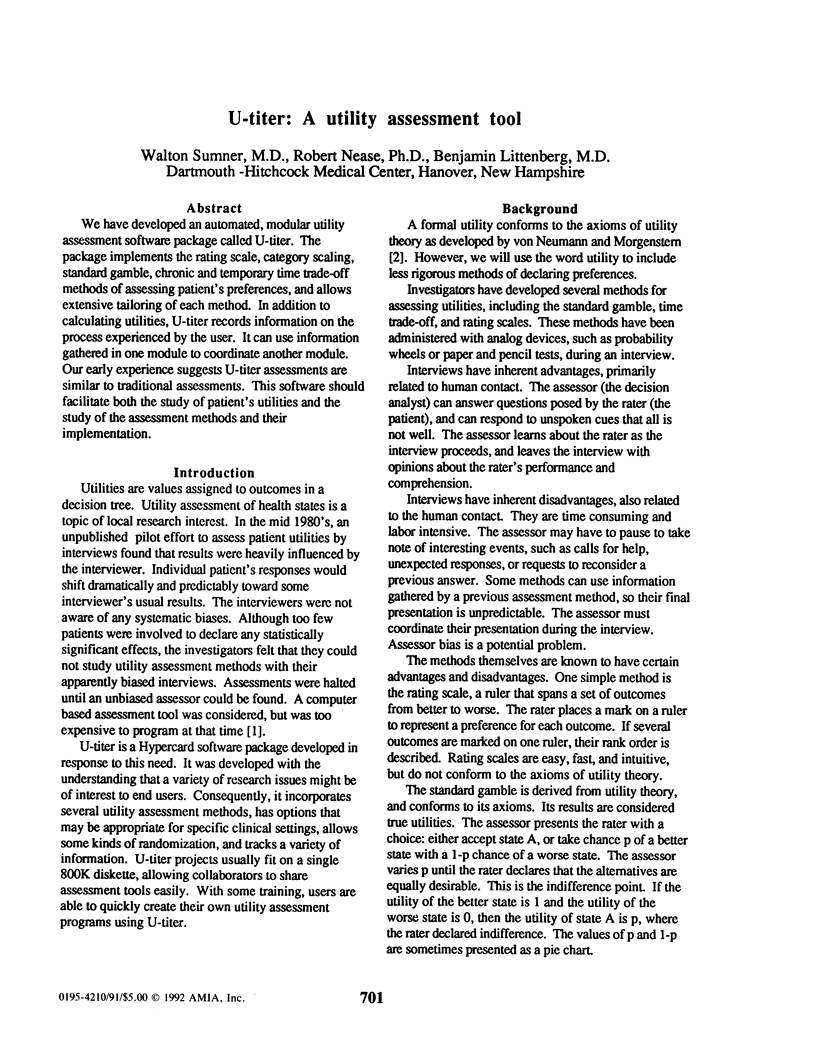
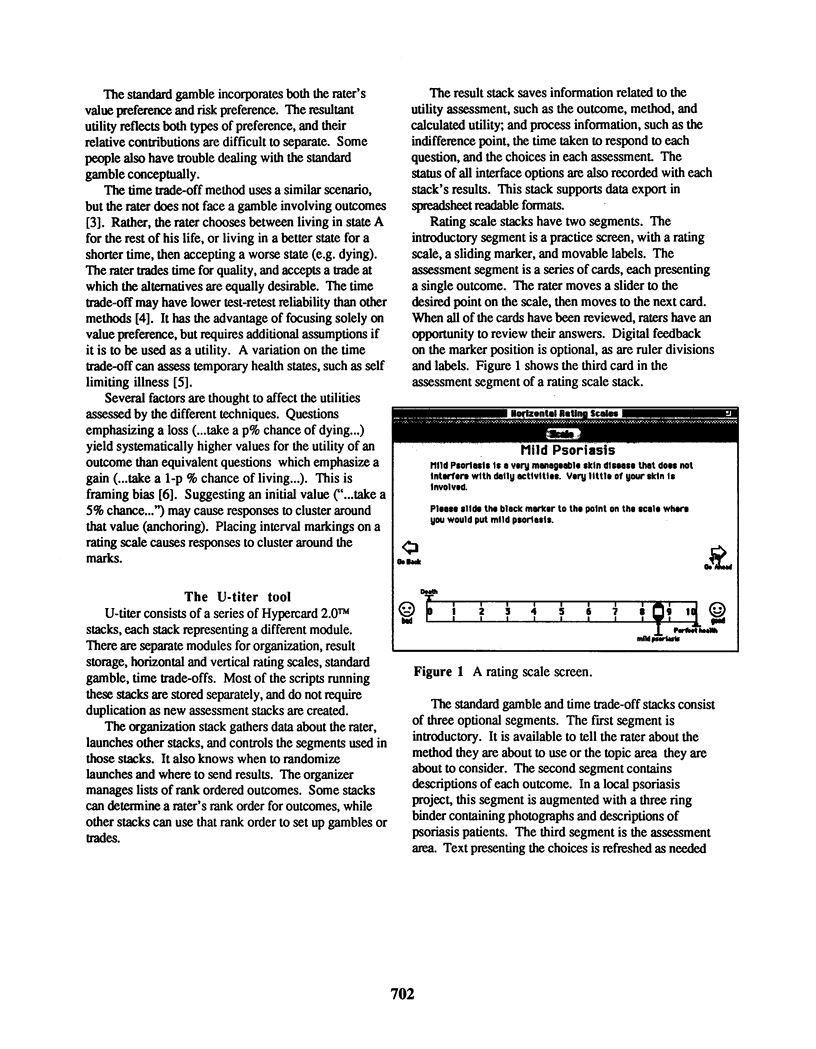
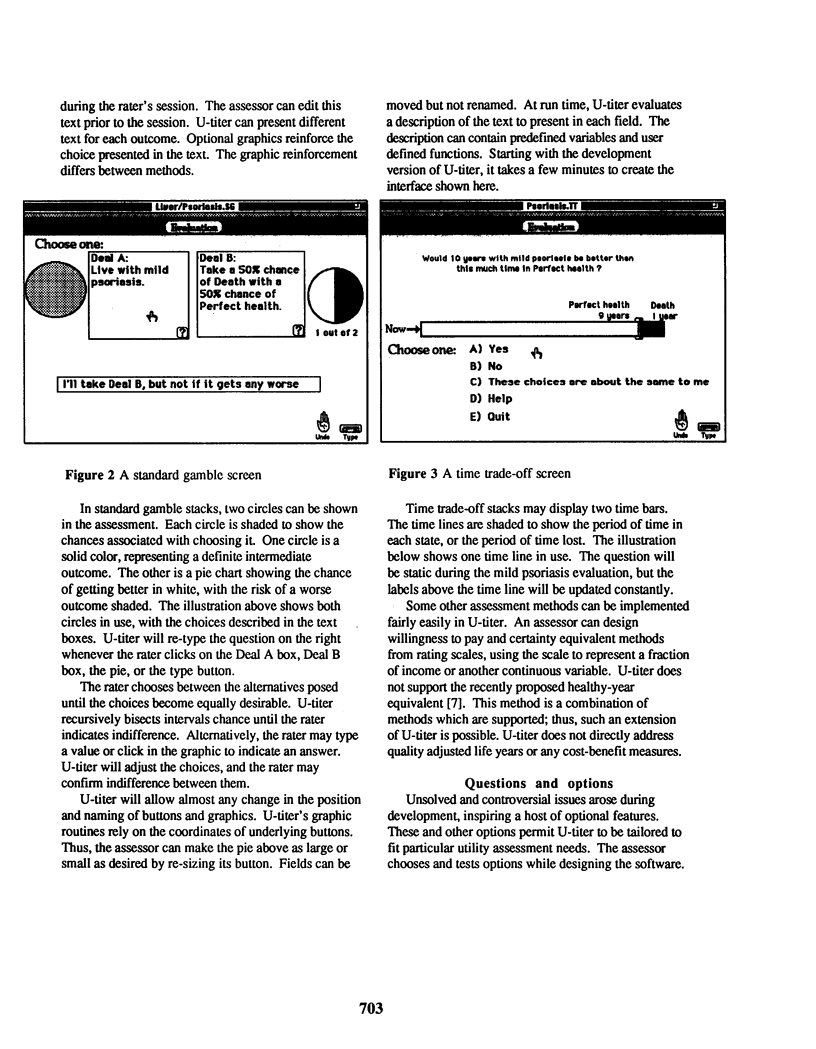
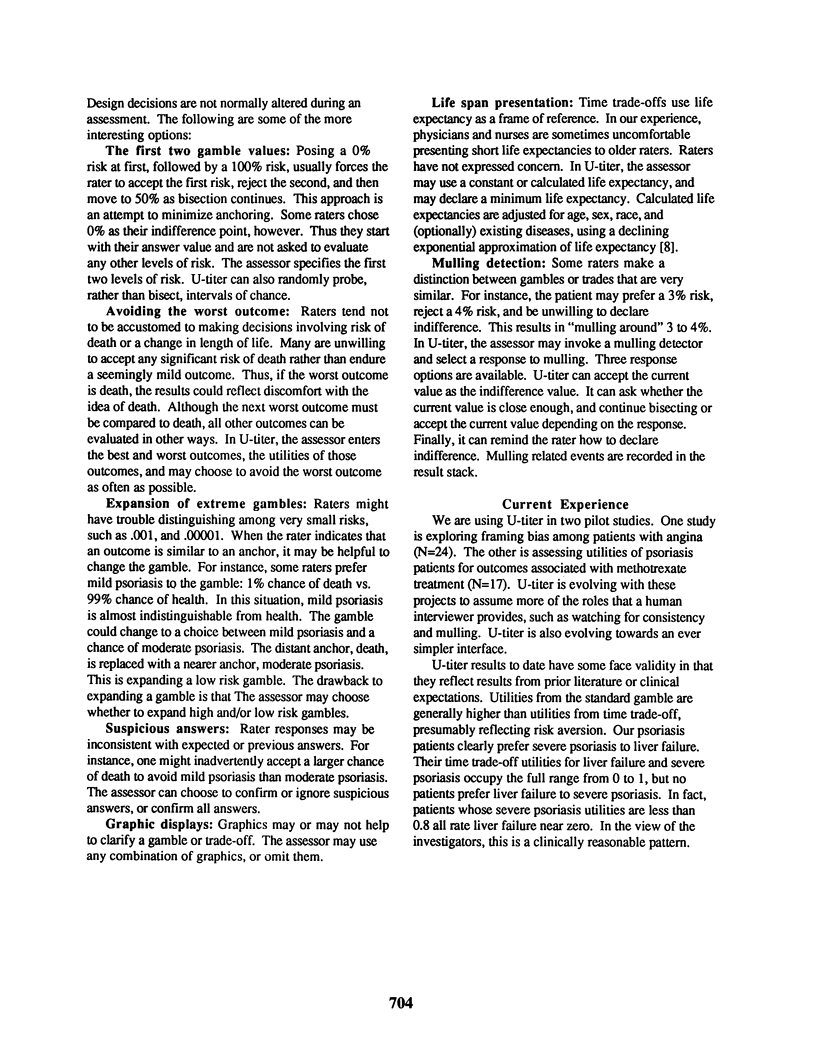
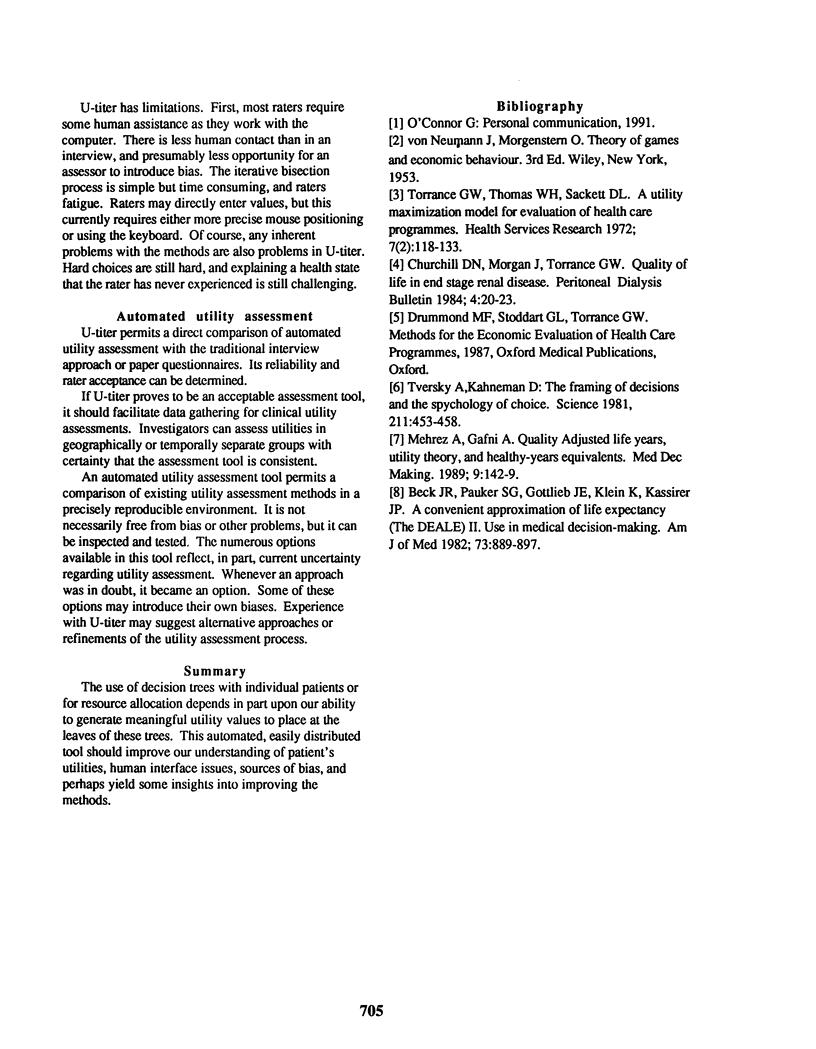
Selected References
These references are in PubMed. This may not be the complete list of references from this article.
- Beck J. R., Pauker S. G., Gottlieb J. E., Klein K., Kassirer J. P. A convenient approximation of life expectancy (the "DEALE"). II. Use in medical decision-making. Am J Med. 1982 Dec;73(6):889–897. doi: 10.1016/0002-9343(82)90787-2. [DOI] [PubMed] [Google Scholar]
- Mehrez A., Gafni A. Quality-adjusted life years, utility theory, and healthy-years equivalents. Med Decis Making. 1989 Apr-Jun;9(2):142–149. doi: 10.1177/0272989X8900900209. [DOI] [PubMed] [Google Scholar]
- Torrance G. W., Thomas W. H., Sackett D. L. A utility maximization model for evaluation of health care programs. Health Serv Res. 1972 Summer;7(2):118–133. [PMC free article] [PubMed] [Google Scholar]
- Tversky A., Kahneman D. The framing of decisions and the psychology of choice. Science. 1981 Jan 30;211(4481):453–458. doi: 10.1126/science.7455683. [DOI] [PubMed] [Google Scholar]


